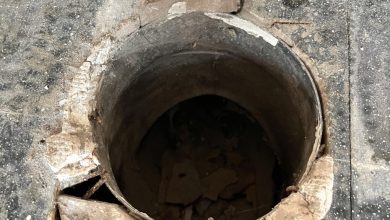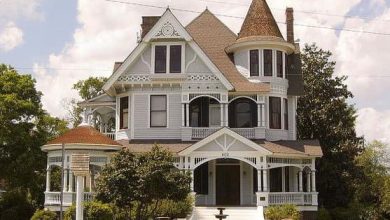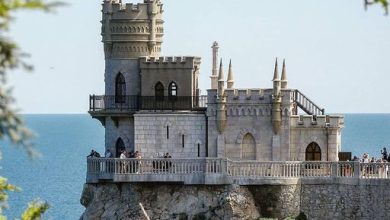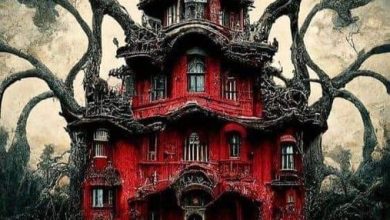Uncategorized
Braemar Castle, Aberdeenshire.
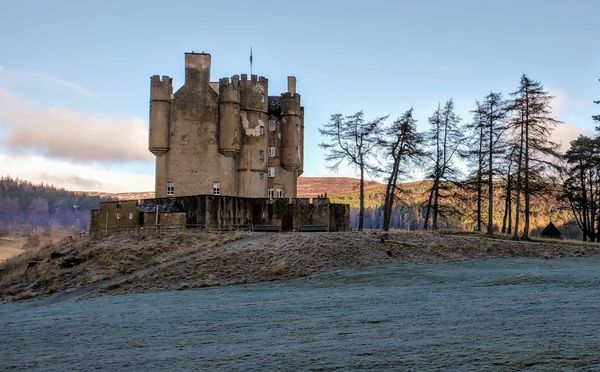
Braemar Castle stands on a bluff rising above the south side of the River Dee, two thirds of a mile north-east of the centre of Braemar. In basic form it is an L-plan tower house with a large round stair tower in the inner angle of the the “L”, and it is adorned by bartizans, stepped-out from the corners of the basic structure at the level of the top two floors.
The tower house dates back to 1628 and it is surrounded by a star-shaped perimeter wall pierced by musket loops added when the castle was rebuilt and used as a base for government troops from 1748. As a result, Braemar Castle can be seen as one of a pair formed with Corgarff Castle, equipped with a similar outer wall at about the same time and located just 12 miles as the crow flies across very mountainous country to the north-east of Braemar.
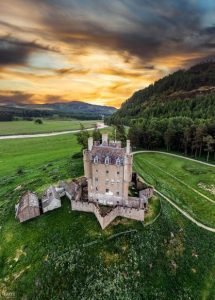
From the early 1800s Braemar Castle served as the ancestral home of the Farquharsons of Invercauld and until 2005 was open to visitors. It then closed its doors, leading to a period of uncertainty about its future. In February 2007 the community of Braemar became the lease-holders when they acquired the castle from Invercauld Estate for 50 years on a peppercorn rent.
The main tower of Braemar Castle was built in 1628 by John Erskine, Earl of Mar. Erskine’s aim in building the castle was twofold. Firstly he wanted to strengthen his political and military control over Deeside: and he especially wanted to ensure that the Farquharson Clan, nominally his vassals, did not step too far out of line or gain more power than he felt was good for them. He also wanted a lodge for his use when hunting in the extensive forests of Deeside.
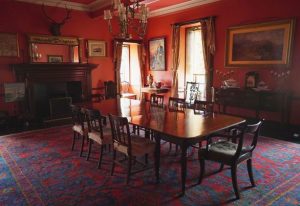
During the 1689 Jacobite Uprising, the Erskines and the Farquharson’s found themselves on opposing sides. John Farquharson of Inverey, popularly known as the “Black Colonel”, was a strong supporter of the Jacobite cause and attacked government troops holding Braemar Castle before burning it down to prevent it becoming a permanent government garrison. Plans were made to rebuild Braemar Castle in 1689 and in 1715, but on neither occasion were the plans realised.
The 1715 Jacobite uprising saw the old enemies united, when the Farquharsons supported a Jacobite cause which was this time led by John Erskine, 23rd Earl of Mar. Mar actually launched his ill-fated campaign to restore the Stuarts to the throne by raising his standard at the Farquharsons of Invercauld’s home in Braemar, located where the Invercauld Arms now stands.
Following the defeat of the Jacobites, Mar’s estates were forfeited to the Crown. In 1725 Lord Dun and Lord Grange, both Erskines and distant relatives of the Earl of Mar, purchased the forfeited Deeside estates back from the Crown. In 1732 they in turn sold the ruined Braemar Castle and surrounding estates to John Farquharson, the 9th Laird of Invercauld.
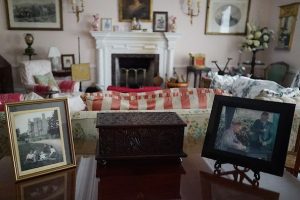
John Farquharson refused to support the Jacobite cause in the 1745 uprising and his Deeside estates were plundered by the Jacobites before their final defeat at the Battle of Culloden. In the aftermath he took what probably seemed the prudent decision to lease the ruin of Braemar Castle for use as a barracks by the Hanoverian Government. The lease, for 99 years from 1748, was in return for the payment of £14 per year. The main tower house was subsequently rebuilt as you see it today and the star-shaped surrounding wall was added.
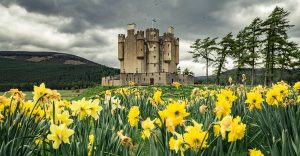
The army ceased to use the castle in 1797, and in 1807, James Farquharson, the 10th Laird of Invercauld, negotiated its return. The castle subsequently became the family home of the Farquharsons and frequently hosted Queen Victoria during her regular visits to the Braemar Gathering.
